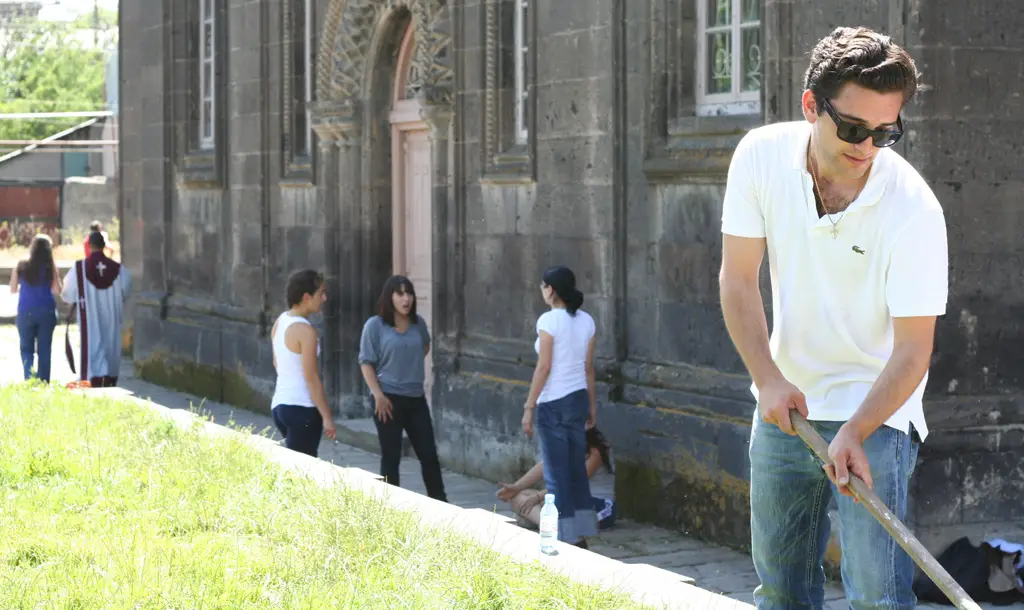The American State that Scrapped Rail Investment and Built a Mall Instead
The mornings are getting hotter here on the Eastern Seaboard of the United States and with the rising mercury subway and rail riders get shortened tempers. The frustration isn’t without cause though, with the recession affecting people’s wallets as well as government receipts. Subways and buses are facing fare increases paired with service cuts – and that’s not just in the U.S. Before the temperatures starting climbing, in the cool, waning days of April, transit riders suffered a blow that will make the coming summer even more unbearable, although the wellspring of discontent actually goes back to last October when a newly elected governor running on the promise of fiscal responsibility took that promise to its unfortunately predictable ends.
The Access to the Region’s Core, or ARC, Tunnel was defunded and canceled by Governor Chris Christie on October 27th, 2010, 15 years and multiple studies – and even some construction days – after it first entered the public transit conversation. ARC was designed to transform the rail and subway landscape in New Jersey and New York. By extending the already expansive station hub at 34th Street in New York City as well as constructing two brand new tunnels, ARC would have allowed for 48 trains to operate per hour to and from New Jersey, up from the current 23. The ancillary effects would have rippled out to ease congestion, spur economic growth, and provide environmental relief to the most densely populated area in the country. This rail project was designed to be a touchstone for a renewed interest in subway and rail development in an area that, while having some of the best transit in the world, still has room, and need, to expand.
The project wasn’t going to be cheap, in fact there was a chance that the ARC Tunnel would eclipse the high water mark for a public transportation project here in the U.S.: the “Big Dig” project in Boston which cost the State coffers $14.6 billion. However, the ARC, just like the Big Dig, was put forward because of its “transformative properties”, a nebulous —and sometimes pejorative by — terminology that ended up being defined by results: reduced traffic, more park space, economic revitalization, and aesthetic rejuvenation.
In this case, the ARC would have doubled transit capacity for the most densely populated corridor in the United States and opened up 44,000 new, permanent jobs. The long-term economic enrichment comes with a price tag that would have potentially reached 11 digits. When you’re a leader, your role is to make decisions and deal with the consequences. In the case of New Jersey, a leader made a decision based on fiscal responsibility, and although I disagree with his reasoning I understand the conclusion he drew even after receiving favorable funding packages from the Federal government. It was the decision that came five months later that bookended a bad defunding decision with a bad funding decision, when Gov. Christie decided to use state funds to provide favorable loans to a development company – building a mega-mall.
The former Xanadu, newly redubbed American Dream @ Meadowlands in what could only be a vigorous nod to the Twitterized masses, has been a black eye for real estate development in New Jersey. The project was meant to be an even more grand vision than the Mall of America in Minnesota, complete with an indoor ski slope. A month ago, Gov. Christie gave a new developer this deal:
“The new developer, the Triple Five group, will invest more than $1 billion in the seven-year-old project. And Gov. Chris Christie has agreed to provide low-interest financing and to forgo most sales tax revenue for a period of time… The administration is offering a financing package of $180 million to $200 million, with the developer able to use most of the sales taxes they collect to repay the loan, rather than contributing the money to the state budget.”
This isn’t exactly a groundbreaking story of government corruption; in fact it’s not corruption in the first. But what it is an inappropriate decision a time of forced and severe austerity for millions of Americans that Gov. Christie has decided to fund what amounts to a temple to profound consumption and, just a year before, defunded a project that would have improved life and finances for millions. And while the fiduciary gulf between the projects stretches into double digits the proximity of the two projects in geography and chronology speaks to a misplaced sense of fiscal right-mindedness.
This isn’t the end of transportation as public works; rail development in Taiwan and Spain have transformed economies in areas once laid barren and light rail is coming to both Minneapolis and Detroit (for a more satirical take on Detroit, click here), the latter ravaged by the departure of American industry. It is a blow, however, transportation projects aren’t as popular as they used to be and with an increasing focus on cut budgets they disappearing slowly. The ARC Tunnel could have been a move back towards large-scale public works projects; there is a chance it may come back. We need to make sure that plans like this are given a fair shake, with their benefits laid out for everyone to see while looking at costs in the long-run. Ask any Bostonian who was around in the years before the Big Dig and they’ll tell you an accurate cost estimate for the project: priceless.
We’ll get there someday. For now, all we can do is watch the parking lots and valet stations being built for the former Xanadu, a summer palace for Gov. Christie.
Photo: John Mark Smith


